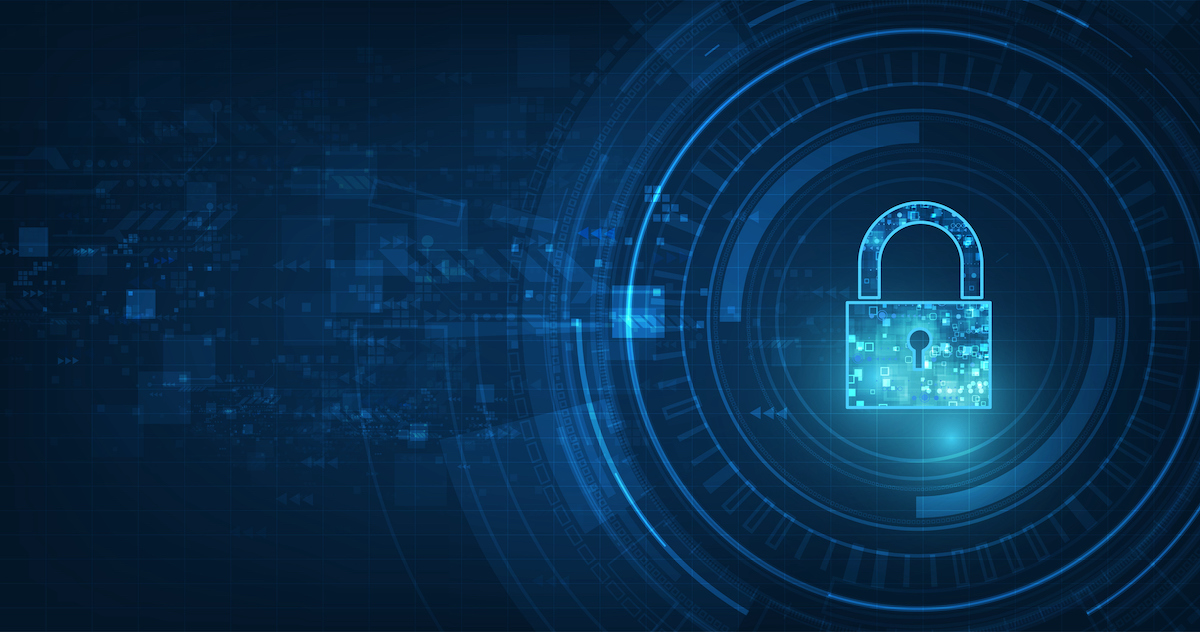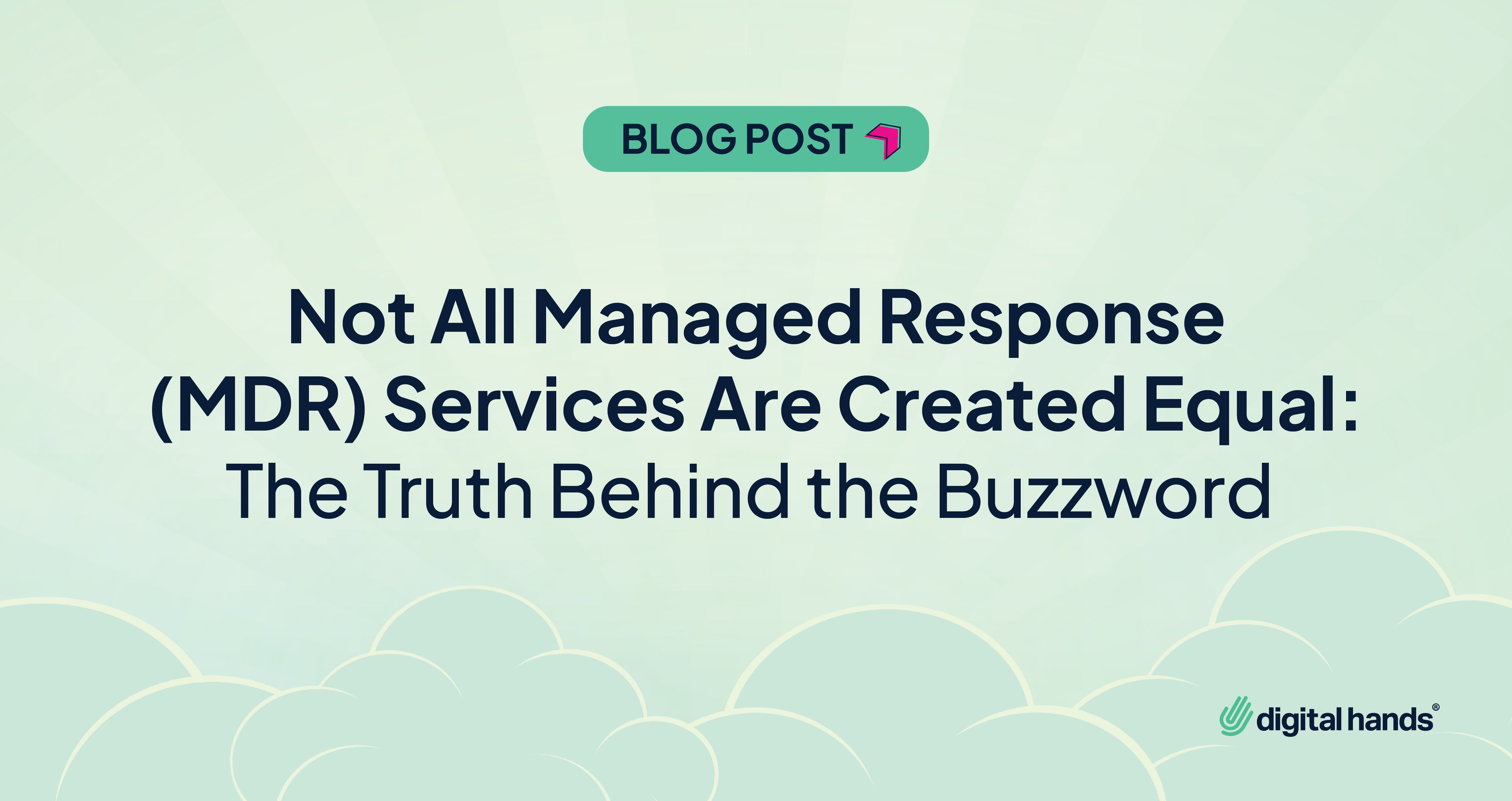
What Makes a Next-Gen SIEM Effective?
Jun 15, 2021 2:49:48 PM | Digital Hands
Security Information and Event Management (SIEM) platforms analyze network data to identify and aggregate security anomalies or threats by correlating different log sources together. Traditionally, these platforms are advantageous because their broad use of Machine-Learning analysis presents a more in-depth perspective than normally offered by individual logging and monitoring tools.
SIEMs are incredibly useful for auditing and reporting. But until recently, they were rather limited when identifying the specific threat activity and methods. Furthermore, traditional SIEM platforms offer very little in the way of meaningful action to eliminate or manage detected threats.
These limitations have now been addressed with the introduction of numerous next-gen SIEMs. Next-gen SIEMs now offer advanced features such as integrated threat detection, and more impressively, the potential for automated real-time threat containment.
The Next-Gen SIEM Difference
The original wave of SIEMs were rule-based and utilized specified parameters to assess potential attack events, categorizing them within the known threat behaviors. These early models were reliant upon logging and pre-defined scenarios to provide security reports and compliance assurance.
This approach prevented intelligent and adaptive reporting due to its reliance on user-defined behaviors. The lack of contextually aware monitoring meant that these platforms had great difficulty categorizing new or undefined attack parameters. Because the model employs predefined activity, there is a large gap in potential event detection due to policy oversight or lack of detailed parameter definition. If the signatures of a threat go undefined, then there is a possibility that it could go unidentified.
Next-generation SIEMs often employ machine learning and modeling engines to generate and implement intelligent rule sets, allowing for real-time updates to known threat behaviors. These platforms further leverage machine learning with the constant ingestion of network device activity to create a behavior profile. This profile is incredibly effective at detecting anomalous behaviors or using patterns to identify signs of compromise quickly.
The automation of processes allows these event managers to robustly detect and address security events quickly and accurately without any human intervention. This feature greatly reduces the operational resources required to ensure optimal compliance and effectiveness.
Along with the use of these advanced methods of monitoring, the next generation of SIEMs provide the opportunity for proactive threat intervention. This means that unlike the traditional platforms, these are capable of eliminating detected security risks accordingly with the increased capacity for intelligent assessment provided by dynamic rule sets.
Key Features of the Best Next-Gen SIEM
The plethora of advantages provided by modern SIEMs makes them rather ideal for an enterprise environment. When considering these new platforms, it’s important to remember that they are not all created equal. For effective implementation and operation, there are three key features to look for when deciding on a next-gen SIEM:
The platform must be able to analyze and aggregate data from a diverse ecology of sources.
With the ever-expanding nature of dataflow and infrastructure, relevant data must be collected from various sources such as the local network, log databases, and cloud communications. The ability to monitor such a varied ecology presents users with a thorough perspective of the threat landscape.
The platform must utilize detailed user and asset contextualization.
Addressing the former limitations of previous iterations, data can now be categorically analyzed to identify anomalous behavior. By analyzing details such as associated IPs, user credentials, personal data, known machines, and most importantly, behavioral timelines, a contextual baseline for user activity can be established and referenced. These data processes are crucial for rapid threat detection.
The platform must be capable of effective automated threat detection and response.
SIEM solutions providing pre-scripted response scenarios can reduce response time and human intervention required in a confirmed threat incident. The process of automation can allow the creation of rule sets and preferred response methods to be categorized by specific threat patterns.
CyGuard™ Next-Gen SIEM by Digital Hands
With these considerations in mind, Digital Hands® offers an ideal next-gen SIEM platform that prioritizes efficiency, automation, and scalability. The CyGuard™ Next-Gen SIEM performs proactive threat mitigation by leveraging User and Entity Behavioral Analytics (UEBA) and continuous machine learning to quickly identify abnormal user or application activity.
UEBA data such as location, activity timelines, use behaviors, and credentials inform CyGuard’s activity profiles continuously to maintain a constantly updated and contextually aware intelligence baseline.
Once a threat is detected, CyGuard’s™ Security Orchestration, Automation, and Response (SOAR) integration assists with rapid intervention. Customizable playbooks work with SOAR functionality to allow multiple teams to create automated response scenarios. By implementing an investigation workbench, teams are able to expand upon detected security incidents to explore abnormal entity behaviors.
With cloud integration becoming increasingly prevalent in enterprise environments, the need to monitor these connection points is incredibly important to asset protection. Services such as AWS, Azure, and Google Apps now integrate fluidly into architecture pipelines connecting numerous decentralized user and entity access points. These access points present numerous opportunities for external threat events that were traditionally easy to miss.
CyGuard’s™ cloud-native visibility easily integrates with these and many other services to ensure detailed and robust coverage even with external services.
Next-gen SIEMs have expanded on the features of early iterations by empowering users with the latest innovations in AI and machine learning to provide next-level threat analysis. With the ability to aggregate robust, intelligent, and actionable data, incident detection and response times are drastically reduced.
With the clearly defined advantages of an ideal next-gen SIEM, it’s not difficult to identify the most important features. CyGuard™ places fast and informative asset monitoring in the hands of organizations while limiting the required amount of human intervention.
In doing this, CyGuard™ helps to usher in a new industry standard of intelligence-focused threat detection.
Table of Contents
Subscribe to Our Monthly Newsletter
The latest on emerging threats and strategies—straight to your inbox.
By submitting this form, you agree to Digital Hands' Terms of Use and Privacy Policy.
Subscribe to Our Monthly Newsletter
The latest on emerging threats and strategies—straight to your inbox.
By submitting this form, you agree to Digital Hands' Terms of Use and Privacy Policy.

.png)

.png)